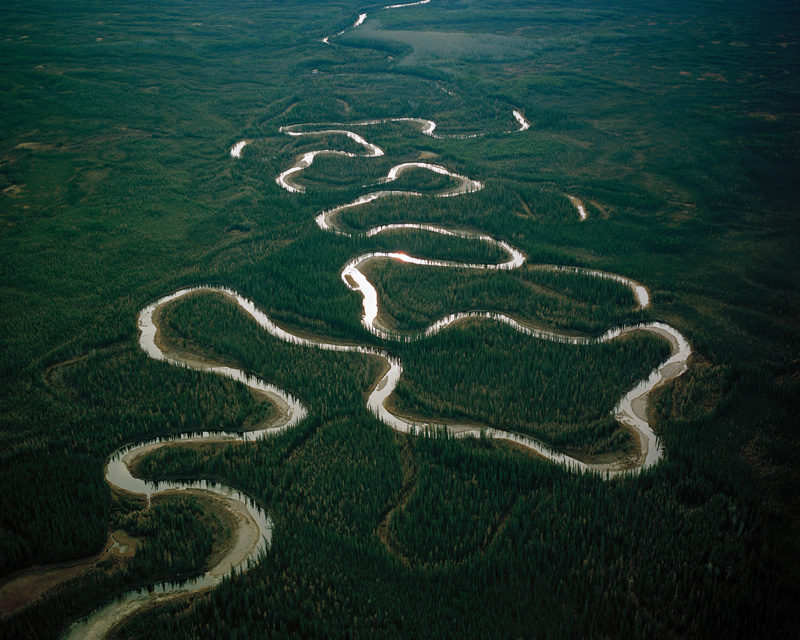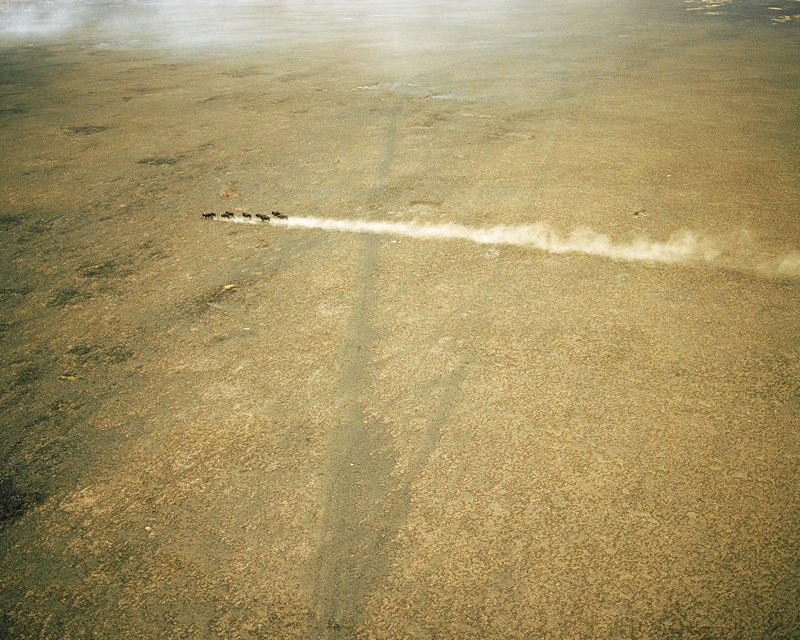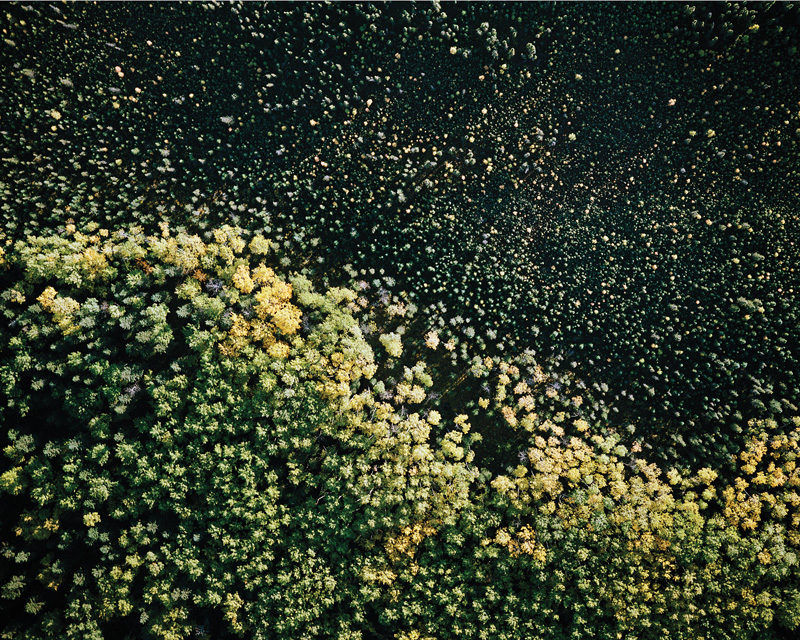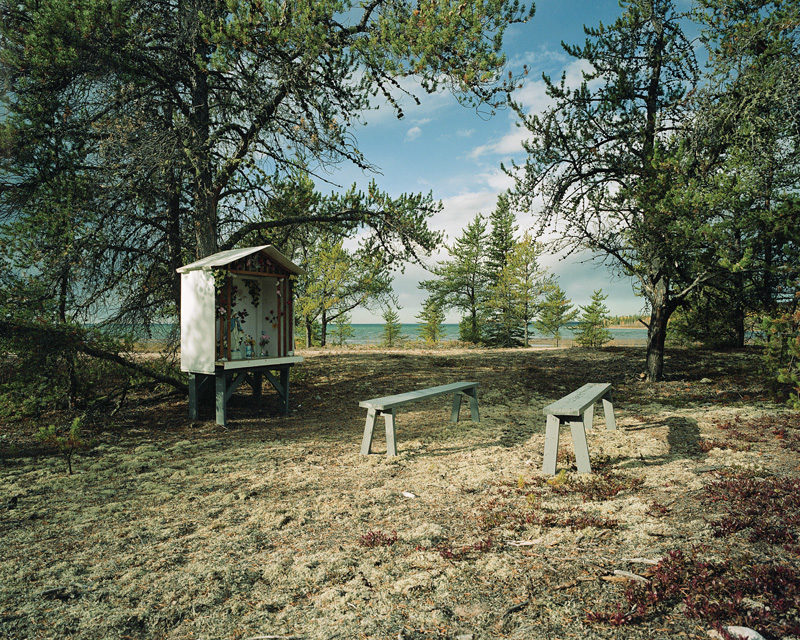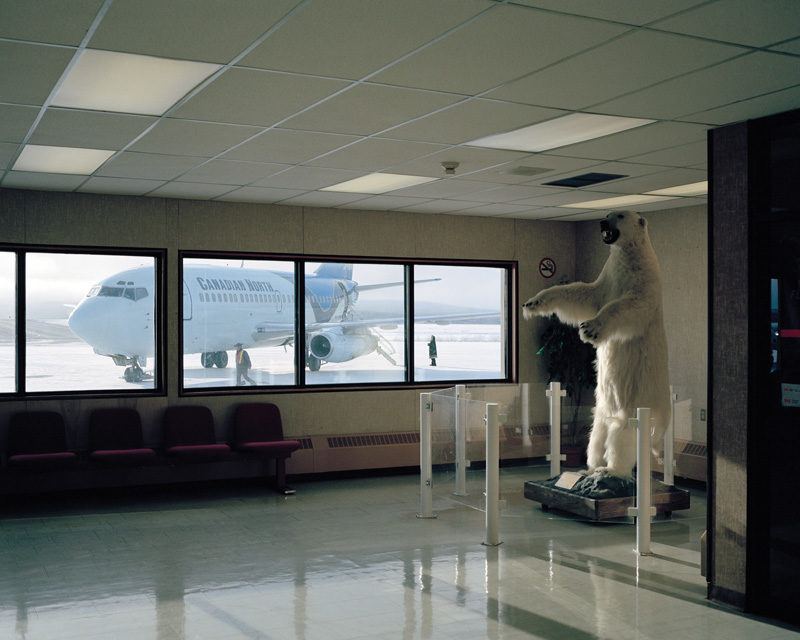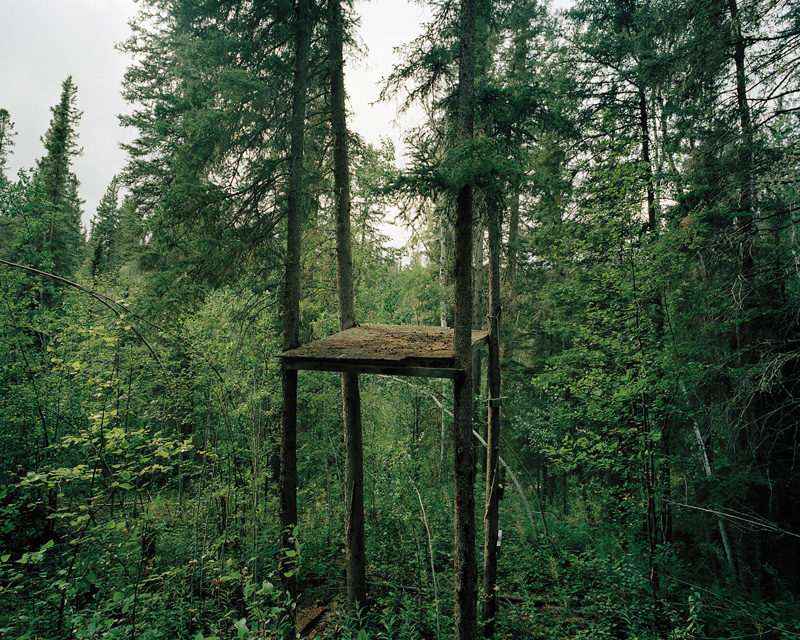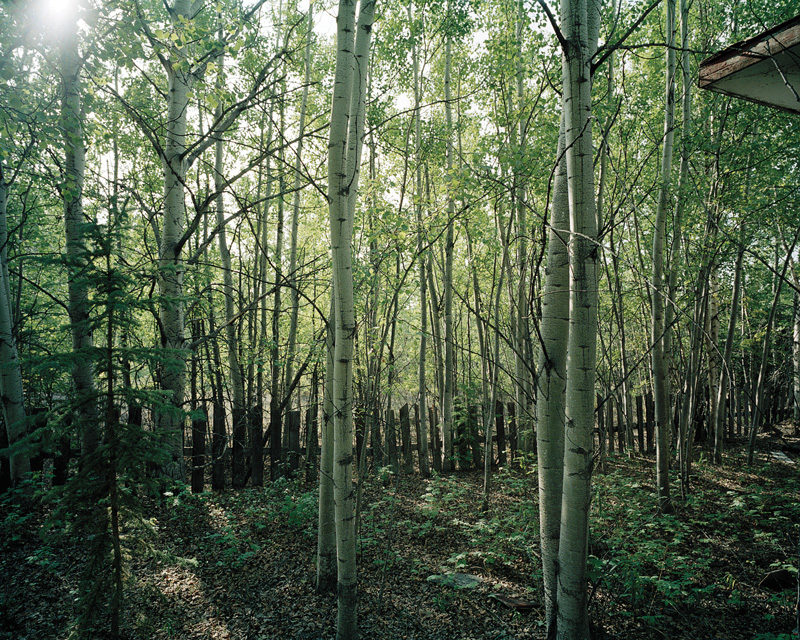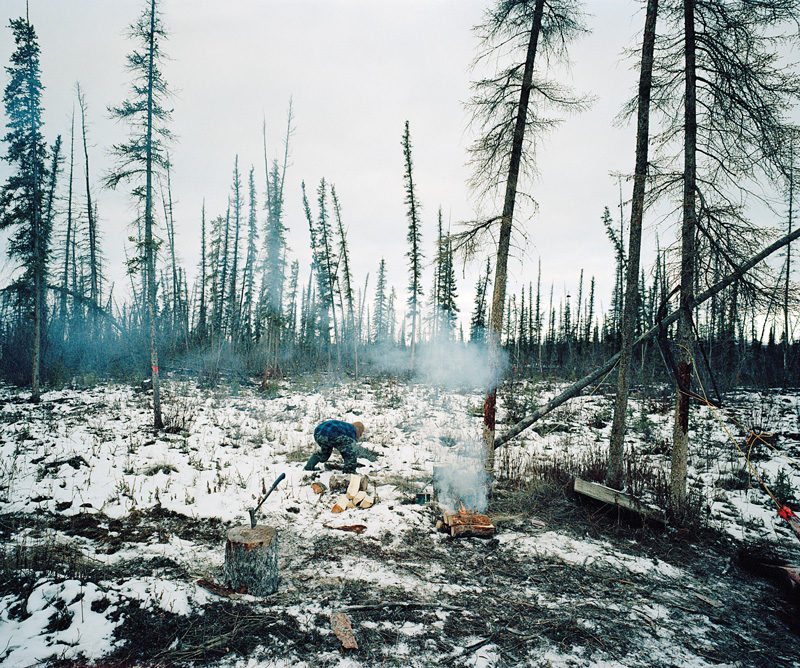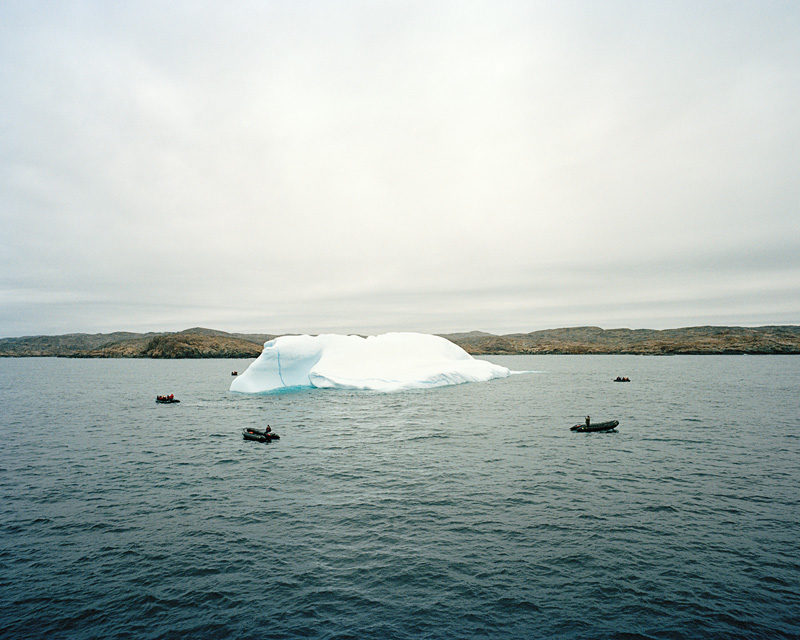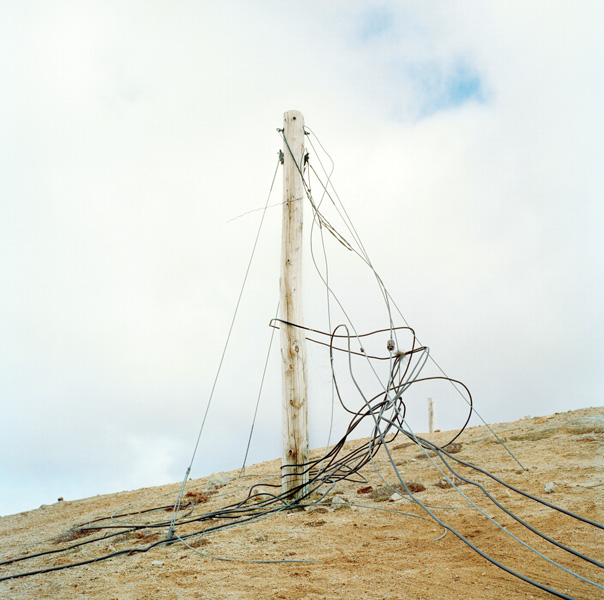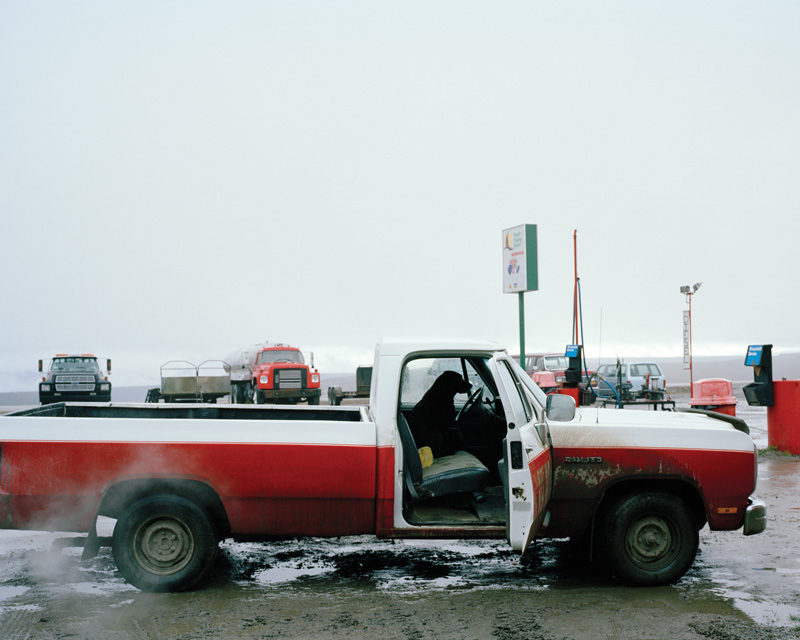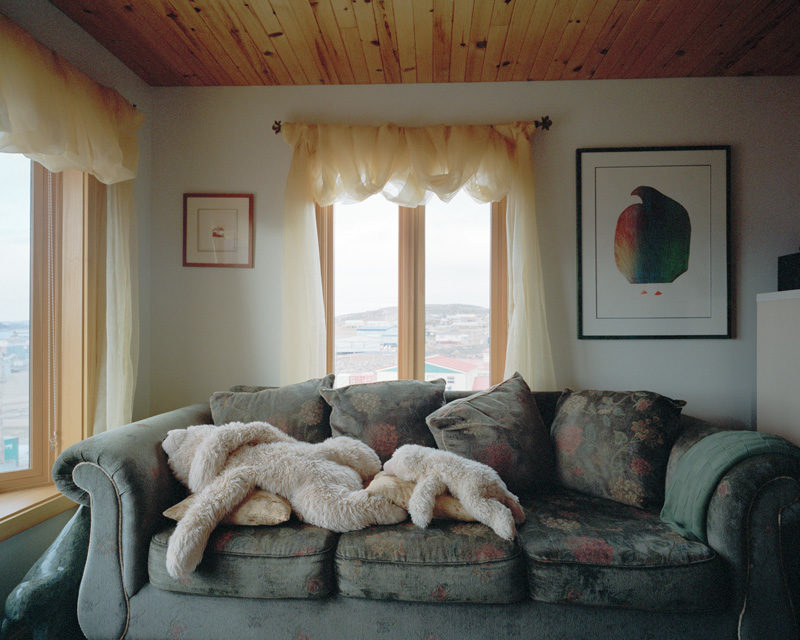My first encounter with Canadian photographer and artist Eamon Mac Mahon was when I worked as an editor for a travel magazine, at which he was the stuff of local legend. He had shot a story about the Bahamas for which he’d risked life and limb: on a tiny, rickety plane with, lore dictates, more holes than a fisherman’s net, he hung out of the main cavity – tied in place with only a rope – to capture aerial shots of the turquoise swirling waters. The story won awards.
Known mostly as an editorial photographer with an impressive client list (Walrus, Toronto Life, Canadian Geographic, National Geographic, W, New York Magazine, Time, and enRoute), Mac Mahon has authored a couple of series along more personal lines that point to a distinct mandate behind his adventurousness. Amazon of the North (2011) was published as a photo essay in Walrus as sort of ecologist’s love letter to the boreal forest, the world’s largest terrestrial carbon storehouse. Mac Mahon pictured this invaluable natural resource under the siege of industry mainly from a bird’s-eye view, revealing nature’s incredible patterns, textures, and grandeur. Landlocked, the series presented here, is a more recent spinoff project: it explores five or six towns nestled deep within the thick of that same forest, north of where Mac Mahon grew up. No roads lead to these small human clusters, which include Old Crow and Uranium City; they’re accessible only by plane. Luckily, Mac Mahon is a frequent flyer.
Though he grew up in northern Alberta with the boreal forest as his backyard until the age of six, Mac Mahon moved first to Ireland for a couple of years and then to Toronto for the rest of his childhood. He has since lived a global citizen’s life, in part because of a fortuitous meeting during that period in Toronto; that’s when Stephen Anderson became a lifelong friend. After a stint as a commercial fisherman, Anderson became a pilot and the owner of a small bush plane. “My friend Stephen bought a cheap old tail dragger in Halifax, and he first flew it from Toronto to Alberta to build up his flight hours,” says Mac Mahon, on the phone from a stopover in Boston (tomorrow, he’s embarking on a month-long journey across the Atlantic aboard a ship to Iceland). “I’d come along and hunt for jobs for us along the way – any kind of aerial work I could get. A lot of the time, if we passed through a small city, if there was a big hotel of a golf course or a tourism office, I’d pitch a photo project.”
The first year, the duo started in Edmonton and went north, and then west, seeing from above the large wild area Mac Mahon had grown up knowing. The second year, they got a nice contract photographing watersheds for an environmental group and caribou for the World Wildlife Foundation in Old Crow, in the Yukon, which led to more Yukon explorations and a foray into Alaska in the third year. The aerial images, such as Winding River, White Owl, and Rainbow, are imbued with the excitement of supra-human achievement.
There’s something about taking a bird’s-eye view that gives people an otherworldly rush. It’s as simple as the thrill of exceeding the limitations of our earthbound state that was born with the invention of the aircraft – “man conquering sky.” But there’s also a paradigmatic awe that comes from the evident self-sufficiency and aesthetic autonomy of the wild. To view the globe, Earth, from such an inhuman perspective of remove reveals beauties to us that we should not, logically, physiologically, have access to. Mac Mahon, enabled by Anderson, is on what art theorist Jonathan Bordo might call the great trek into wilderness, but he is not armed with bayonets or machetes and leather boots to conquer the environment’s unpredictable undulating grounds, as one imagine our forefathers were; rather, he employs a metal bird, a flying machine, to infiltrate the wild and turn it into the wilderness.
In Bordo’s mind, the suffix “-ness” transforms the wild “from errant, arid, a void, to transgressive, exultant, a condition of pure presence or absence. Wilderness as a linguistic locator manifests or instantiates the condition of wilderness. Ness comes to hold the wild as in a nest or a niche, as if the wild were contained or the core of something. At its core is the wild, the formless: where the wild things are.”1 He goes on: “It is not to chide Wittgenstein to say that grammar, not philosophy, has gone metaphysical on us when it comes to the ordinary word wilderness and its dispositions of use. The wilderness marks its (auto)promotion as a linguistic sign, a sign for dislocation and gaps, as a claim to an exception to culture within culture, pure willfulness (from Germanic wil), beyond the law. It offers signification by emptying and dissolving significance. It halos a very human enunciation by declaring human erasure. The wilderness posits itself as a sign to threaten the extinction of the very human sign.”2
By capturing – trapping – the wild in the split-second speed of his sky-high shutter, Mac Mahon is adding his voice to the age-old battle for supremacy between humans and nature. The wilderness, in Bordo’s sense, is tangible in aerial shots such as Winding River, in which, even if humans tried, they couldn’t create more haphazardly beguiling patterns than Mother Nature has. But at the same time, a human has been wily enough to put himself in a position to see them.
“The way wilderness works isn’t any different than cities, the way I see it,” says Mac Mahon. “The balance that nature comes to, the way it’s always changing – if a forest is cleared, new things are born there . . . there’s that kind of balance, forces working against each other that come to a sort of agreement. We don’t have as much power as we think we do. Things are more complicated because of the time stamp, how old the world is – it’s really hard to see what effect humans will have in the long run.”
A running theme in Mac Mahon’s personal work, apart from a strong urging to witness and account for the ecological damage that we’re doing, is this ultimate insignificance of man. And while it’s a theme that’s visible in Mac Mahon’s aerial shots in a more relativistic kind of way, it becomes really direct when he deplanes and works at ground level. Photographs such as Treehouse, Iceberg, and Picket Fence express how practically absurd our efforts are to keep the wild at bay and tame. What good is a picket fence making a delineation between one patch of unruly forest and another? Can one really claim ownership of land in that context? A work such as Tangled Wires shows exactly what the elements think of our ridiculous efforts to stay in touch with each other via fancy technologies – they laugh in our face. It’s a humbling message.
Mac Mahon’s series on the landlocked towns north of where he grew up in tame, civilized Alberta are imbued with a philosophical sense of humour. Hinting at the Gaia theory that Earth will self-regulate no matter what we parasitical entities try to do to it (possibly by extinguishing us altogether, mind you), his works bespeak the perspective of a man wizened by a faraway perspective, a vue d’ensemble that few of us have the privilege of possessing. He’s seen it all and watches the irony of our errors with an anthropological curiosity.
“That’s definitely a huge characteristic of photography,” says the artist. “I feel more and more that we live in a unique time. It’s hard to predict, but we could easily develop the entire North the way Europe was developed. What’s happening in the Arctic right now and what’s going to happen to the boreal forest will determine man’s future. But it remains amazing that we still have this wilderness in this day and age, and that it’s so huge. They’re chipping away at it, but it’s still there. In those towns you’re surrounded by it – to be there is to be overwhelmed by nature, in a good way. At night you feel all that darkness pressing in. I love it.”
2 Ibid., p. 294.
Eamon Mac Mahon (b. 1976) is a photo and video artist currently based in Toronto. Raised in northern Alberta, his fascination with the wilderness began at an early age. His work has been exhibited at the Griffin Museum of Photography, Higher Pictures, San Jose’s Institute of Contemporary Art, and The Power Plant. A year-long installation of his Landlocked series, described as “magnificent and mysterious” by the Globe and Mail, was presented at Toronto’s Pearson International Airport during the CONTACT Photography Festival. Mac Mahon is currently working on his first book, to be published by the Daylight Community Arts Foundation in 2013. www.eamonmacmahon.com
Isa Tousignant is a contributing editor for Canadian Art magazine and a blogger on the Montreal arts scene for akimbo.ca as well as a freelance writer on culture, lifestyle, design, and travel. After working as a newspaper and magazine editor for over a decade, she recently left the land of cubicles to write her first book, about animals in contemporary art.

